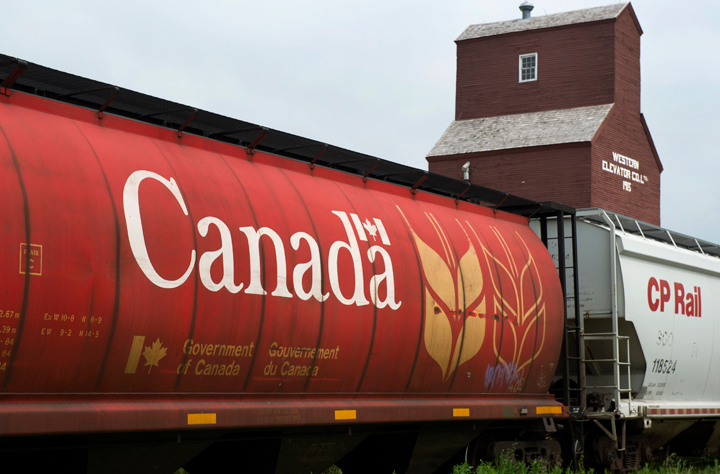MONTREAL – Canadian National Railway says it is making progress to meet the government’s target of increasing grain shipments, but also called on Western Canadian grain elevator companies to ‘step up’ their performance.

“Having wrongly singled-out railways and unrealistically called for a near-doubling of rail car capacity since last fall, it is now time for grain elevators companies to step up to the capacity they claim to have, and do so in the corridors that will benefit Canadian farmers the most,” CEO Claude Mongeau said Monday.
The country’s largest railway said it provided 5,102 hopper cars for loading last week, the most in its history at this point of the season.
It marked the fourth week in a row the railway has delivered more than 4,000 cars. The average of 4,550 cars per week is 21 per cent greater than CN’s average March performance for the last decade.
Calgary-based Canadian Pacific said it is not disclosing the weekly grain car numbers it has been reporting to federal officials. However, CP spokesman Ed Greenberg also said the results show the railway is continuing to move record amounts of grain.
The federal government passed an order-in-council on March 7 that imposes a daily fines of up to $100,000 on CN and rival CP should they fail to double the volume of grain shipments.
Both CP and CN have blamed abnormally cold weather for much of the slowdown in shipments. For safety reasons, the railways reduced the number of cars their locomotives pull in winter to 70 per cent of what they move during warmer months.
- ‘Shock and disbelief’ after Manitoba school trustee’s Indigenous comments
- Canadian man dies during Texas Ironman event. His widow wants answers as to why
- Several baby products have been recalled by Health Canada. Here’s the list
- ‘Sciatica was gone’: hospital performs robot-assisted spinal surgery in Canadian first
Mongeau said it continues to make ‘significant progress’ to reach its goal of transporting close to 5,550 gain cars per week, but can only meet its commitment “if other key players in the supply chain are equally held to account for their performance.”
He said railways are the only segment of the supply chain to be targeted “by heavy-handed regulation” as Ottawa hasn’t yet regulated grain elevator operators.
“The faster space is created at country elevators, the more grain, from the most farmers, will be able to move to market,” he added.
CN has said grain elevator companies acted too slowly at the beginning of last year’s harvest to get it to market.
Elevator operators failed to take advantage of around 10,000 carloads of available rail capacity on the Prairies when the bumper crop started coming in during August, CN said.
“One of the biggest root causes of the challenge we face is a lack of co-ordination across the supply chain and growing pains from new grain marketing strategies following the change in role of the Canadian Wheat Board,” Mongeau said.
“The faster we can ramp up tonnage, the quicker we will be able to mitigate the effects of the grain backlog for all Canadian farmers.”
Last week, CP chief executive Hunter Harrison decried the speed and lack of consultation before the government changed the rail transportation system, that could result in unintended consequences.
“We need to move away from reactionary legislative interventions that target unfairly one participant and potentially damage the Canadian economy,” Harrison said.
“Instead we should all focus on commercial solutions to maximize overall capacity in the grain supply chain.”

Comments